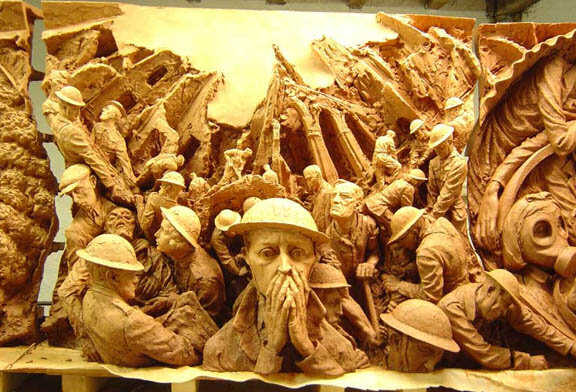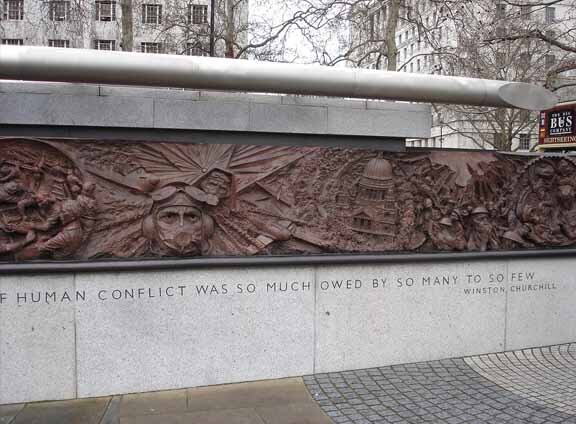BRAVERY IN BRONZE
Across the English Channel, not much more than two hundred miles away from Paris, the City of Lights, lies London, "The City of Monuments" as I like to call it. Both are magnificent world metropolises, but they fared very differently from each other during the Second World War. The stunning defeat and quick capitulation brought a troubled peace to the French, but left their beloved Paris largely intact if decidedly less gay. The heaviest destruction was done to their souls, damage that remained unrepaired until Liberation.
The City of London took a terrible beating, but the spirit of its inhabitants not only remained undamaged, but hardened and glowed red with determination and pride. Spurred by the resounding oratory of Winston Churchill, Londoners, East Anglians and countrymen of the outlying towns and villages stiffened their backs and quite literally awaited blood, toil, tears and sweat. With worried eyes turned to the beaches and up to the summering skies, Englishmen had no misconceptions about their immediate future. Standing up as Prime Minister for the first time in the House of Commons in the spring of 1940, Prime Minister Winston Churchill described the dire circumstances thus, " We have before us an ordeal of the most grievous kind. We have before us many, many months of struggle and suffering." These, Churchill's first words said as Prime Minister, were uttered as Neville Chamberlain stepped aside, his policy of appeasement in tatters. This was a grim promise, far from the ambiguous and limp-wristed speechifying of modern politicians, and it had the effect of pulling Britain's head out of the sand to face her enemy.
Two weeks later, the British Army barely escaped annihilation in the sand dunes of Dunkirque. They were extricated sans equipment in the nick of time by the Royal Navy and the yachts, fishing vessels and coastal scows of Channel ports and towns. While the wounded and exhausted soldiers were being wrapped in blankets and fed tea and coco, the citizens of England searched their hearts for the courage to face what they believed was the inevitable and immediate invasion by a heretofore unstoppable German war machine.
There is an old and beautiful aphorism I have heard only one or two times but that speaks to the English condition at this pivotal moment. It states that "at the hour of greatest slaughter, the great avenger is being born". And so, as Englishmen prepared to sacrifice everything, lose their homes and towns and even die before surrendering, a small force of Brylcreemed and blue-suited youth gathered at the scores of airfields scattered across the vast East Anglian plain and along the southern coastal counties. These boys would, in the months ahead, become known as The Few.
Like no other country, England reveres its history and the heroes that stood at the pivotal moments. And there is a very special place for those who forfeited all or who put their lives on the line for the notion of A Great and Good Britain - Horatio Nelson, the Earl of Cardigan, "Chinese" Gordon, and Lord Lovat (the handsomest man who ever cut a throat) to name a few. Whether you were born to the aristocratic mien or were one of the destitute serfs who ground out an industrial age existence for the benefit of those few with wealth and position, you subscribed to this notion of a "Great" Britain.
The Battle of Britain produced not just a single hero for this pantheon, but an entire force of heroes that embodied that which is so British - honour with freedom or death. The handsome and dashing Spitfire and Hurricane pilots of the Royal Air Force, pushed to the brink of exhaustion and death, became collectively a modern "Horatio at the Bridge".
Their sacrifice, upon which the outcome of Britain's future rested and was wrested from the enemy, took nearly sixty years to honour in bronze. But the British are never in a hurry. Their history is epic and the six decades are but a second in the millennia The Few will be remembered for.
It took forty years to build a lasting monument to Horatio Nelson in Trafalgar Square. For such a powerful and emotional deliverance as the Battle of Britain was for the British, waiting to put the history into perspective and into bronze was well worth the wait. On Battle of Britain Day, September 18th, 2005 a new and stunningly powerful monument was unveiled on the Thames Victoria Embankment in London by the Prince of Wales.
I have always made a point of stopping before every monument or civic statue I pass in any city I visit to read the inscription and to understand what brought its builders to dedicate such time and funds. That soldier on horseback, that mother with child, that stern-faced man seated with book... good or evil, grand or ordinary, all are pivotal or exemplary of great events that shaped the cities and countries where they stand.
Stopping at every monument I pass presents a problem in the City of London for everywhere I turn, there stands a monument celebrating moments and tectonic events in British history and those heroes and history makers that give England its unique view of the world and their place in it. Progress down any street is impeded by bronze expressions of gratitude, love and honour. But I dare say, none of the monuments honours an event as powerfully and as allegorically as the Battle of Britain Monument, designed by Donald Isnall Associates but more importantly, sculpted by British master Paul Day.
Day's remarkably evocative work tells an sweeping story of the British experience during that summer and fall of 1940 putting the Brylcreem Boys and at the very centre of this epic. But Day's masterpiece is for the eyes, not words. Let's pay a visit.
An original architect's sketch from Donald Isnall Associates of the proposed design for the memorial, with the Clock Tower (Big Ben) of the Palace of Westminster in the background. The roundel is made of different tones of paving stone, a subtle feature that was not noticed during my visit. Image via The Battle of Britain London Monument
The site of the Battle of Britain London Monument prior to its construction - along the banks of the Thames close to Whitehall, between Westminster Bridge and Hungerford Bridge - the very heart of the great city. Image via The Battle of Britain London Monument}
Lorem ipsum dolor sit amet, consectetur adipiscing elit, sed do eiusmod tempor incididunt ut labore et dolore magna aliqua. Ut enim ad minim veniam, quis nostrud exercitation ullamco laboris nisi ut aliquip ex ea commodo consequat. Duis aute irure dolor in reprehenderit in voluptate velit esse cillum dolore eu fugiat nulla pariatur. Excepteur sint occaecat cupidatat non proident, sunt in culpa qui officia deserunt mollit anim id est laborum.Lorem ipsum dolor sit amet, consectetur adipiscing elit, sed do eiusmod tempor incididunt ut labore et dolore magna aliqua. Ut enim ad minim veniam, quis nostrud exercitation ullamco laboris nisi ut aliquip ex ea commodo consequat. Duis aute irure dolor in reprehenderit in voluptate velit esse cillum dolore eu fugiat nulla pariatur. Excepteur sint occaecat cupidatat non proident, sunt in culpa qui officia deserunt mollit anim id est laborum.Lorem ipsum dolor sit amet, consectetur adipiscing elit, sed do eiusmod tempor incididunt ut labore et dolore magna aliqua. Ut enim ad minim veniam, quis nostrud exercitation ullamco laboris nisi ut aliquip ex ea commodo consequat. Duis aute irure dolor in reprehenderit in voluptate velit esse cillum dolore eu fugiat nulla pariatur. Excepteur sint occaecat cupidatat non proident, sunt in culpa qui officia deserunt mollit anim id est laborum.
A similar view as the previous architects' sketch shows us the proximity of the monument to the Thames Victoria Embankment. The Monument is surrounded by the names of all 2,936 British and Allied airmen who have been awarded the Battle of Britain Clasp - for flying at least one authorized sortie during the Battle. 544 of these men would die in the Battle and by end of war, a further 795 would perish in other battles. Nearly half would make the supreme sacrifice for freedom. The names are divided by nationality so that one can read those of all 112 Canadian participants. Image via The Battle of Britain London Monument
Related Stories
Click on image
The central panel of the Battle of Britain London Monument depicts the iconic image of the "Scramble". Paul Day explains: "It is the very symbol of the Battle. In this case, the pilots surge off the wall, out of their picture and onto the pavement, into our world, a reminder to say that these men really did exist and do those incredible things". Photo by Andrew Brent, Over40Something at Flickr.com
Zooming a little closer to the action we see the youth and even fear on the faces of the young men rushing to their Hurricanes and Spitfires. The detail, emotion and richness of Day's work bring these bronze figures to life and draw the viewer back in time. Photo by Marnie Reaney, Marz Photography at flickr.com
Closer still and we can feel the airmen pounding across the grass, hear their heavy breathing, the clinking of their equipment and sense their throats dry with fear. Photo by Paul Jackson, Art Naphro at flickr.com
A side view shows us that the Scramble scene fairly leaps out of the monument onto the street. Photo by John Gaches, superhoopoes at flickr.com
A close up of one of the Scramble figures reveals the bold strokes of Day's work. The gifted sculptor has captured that sharp and handsome cut men under the stress of war always seem to have. Photo by Leo Reynolds at flickr.com
The panel known as "Large Pilot's Head and Plotters" may have a rather un-dramatic name, but it is one of extraordinary power and action - one of the most dramatic in the Monument. Here we see his clay original at the artist's studio in France. The breathtaking depth that Day is able to achieve is remarkable. The lenses of the pilot's goggles even have the reflections of the Spitfire's cockpit canopy rails. Paul Day explains his intent: "Depicting an air battle in painting or sculpture is not easy to do. Aviation painting has adopted the point of view of a fixed lens attached to the wing of an observation aircraft maintained at a safe distance from the action to serve the needs of composition. The image is generally taken at a thousandth of a second and completely freezes the action. I adopted the view that air combat took place above all in the cockpit and in the eye of the combatant, that it was fast and somewhat blurred. It is as much about the psychological intensity etched into the pilot's brow as the superb ellipses described by a Spitfire trying to avoid a pursuing Me109. In this case, with the huge pilot's head, I wanted to put us in touch with the flesh and blood behind the machine, though in some way, the flesh and blood and the machine are one. A young face can look old when enduring excessive physical danger and intense concentration. This I hope is the case with this pilot who is surrounded by speed, smoke and tracer fire. He is not alone, however. His moves are being followed; his frantic speech passes directly from the air into the ears of the young girls at the plotting tables who will him on to victory and home to safety, who may even share his last moments of agony." Photo via The Battle of Britain London Monument
A close -up of the Mechanics and Riggers panel of the monument. Day has included all aspects of the Battle of Britain - both the combatants and the non-combatants. Day explains "None praise the work of the ground crews more highly than the pilots themselves, whose very lives depended on the vigilance and efficiency of their RAF colleagues. Their tasks were more repetitive, their heroism less glamorous than that of the pilots, but they shared amply in the danger and took as many risks. From bombing raids to machine gun sweeps by enemy fighters, the ground crews faced battle at the sharp end. Here the armourers wrestle with bullet belts whilst arming Hurricanes." Photo by Marnie Reaney, Lens Envy at flickr.com
Before the Luftwaffe made landfall over England, they were spotted by a combination of radar technology and the Mark I Eyeball. Paul Day explains "Scattered around the coast and inland, the 30,000 strong Observer Corps ceaselessly scoured the air to intercept, visually and orally, enemy raiders. After RDF (Radio Direction Finder), they were the next line of defence and crucial for the relaying of information back to Uxbridge." Photo by Leo Reynolds at flickr.com
After the fight, there was the inevitable flying with hands, the bold and boisterous talk of young men who have fought and returned safe - only to do it all again. This panel was titled "Tales from the Mess" by Paul Day and he explains his intentions: "Young, inexperienced pilots drank in the commentaries of their battle hardy counterparts. Knowledge gained this way was as necessary to their survival as the initial flying course. I imagine that it was camaraderie and a sense of the Squadron spirit that gave those young men the strength to face death and injury on a more or less permanent basis. Having read a great many pilot's memoirs, I am still amazed at how easily death came through accident and inexperience: an uncaged artificial horizon or undercarriage raised during landings, navigational error and unchecked propeller pitch." Photo by Victius at flickr.com
Rest was hard to find for pilots and ground crew during the battle. "Waiting for the signal to be brought to readiness or to scramble allowed the pilots much needed time to rest. The backdrop of the Channel [and the White Cliffs of Dover] is a reminder as to where many pilots were to end up finding a place of permanent rest." writes Paul Day. Photo by Victius at flickr.com
The second major wall of the the Monument features again the pilots at the very centre of the Battle. Photo by Andrew Brent, Over40Something at Flickr.com
The artist's original clay sculpture of the central panel of the second wall - in his studio on France. The panel, entitled "Dogfight" depicts a pilot under attack by a German fighter pilot. The action is breathtaking! It's best explained by the artist himself: "In my mind, pilots have to be at the centre of this Monument on both sides. Their lives are at its heart. As I wrote earlier, I have chosen to portray a pilot's eye view of air combat and not that of the aviation painter. In any case, skies in relief sculpture are not the easiest of subjects to make work. I have put the head of a Messerschmitt pilot onto the shoulder of an RAF one to try and create the sense of a duel being fought out by two knights of the air, in close proximity and to the death. The "Hun in the Sun" has the advantage but as their aircraft fly past behind them, the Spitfire has managed to slip onto the tail of the Me109 and has caught it with tracer fire. The pilots on both sides had a healthy respect one for the other. Likewise, in this work, I am in admiration of all the young men who took part." Photo via The Battle of Britain London Monument
The Spitfire pilot with the Messerschmitt pilot on his tail - note the reflection of the Spitfire's canopy in the goggle lenses of the RAF pilot. Photo by Nick Raymond, somadjinn at flickr.com
A close-up shot of the fighter pilot's face while under attack reveals the stunning depth, richness and even and "colour" Paul Day manages to wrest from bronze. Photo by Victius at flickr.com
When viewed from close or from afar, this is one powerful story told in bronze. The nearest panel shows a German Dornier dropping a bomb while gunners take action and worried citizens scan the sky, watching the massive battle for their freedom in the bright summer skies. Photo by Andrew Brent, Over40Something at Flickr.com
Women factory workers lend a strong arm to the production of fighter aircraft for the Battle - the artists original clay master at his studio. Photo via The Battle of Britain London Monument
The panel called "The Gunners" (left) meshes seamlessly with "Women Power". Day points out that the war was a liberation for women - "... this War wrote a major chapter in the evolution of Society's attitude to women in the work place. The woman worker's role did not stop at the aircraft and munitions factory gates. Women ferry pilots also flew the aircraft from the factory to the airfield. This is not political correctness, just interesting, historical fact." Note the gunner blowing a cheeky kiss to the "bird" working at the Vickers Supermarine factory assembling the unmistakable form of a Spitfire's wing. At the left of "Women Power", ladies sit at work benches assembling components for the war effort. Photo by John Gaches, superhoopoes at flickr.com
The "Kiss" - the beauty of Paul Day' s stunning allegorical work is that there are hidden images and layer upon layer of detail. Looking at these two, I can sense the "cheek" of the young gunner and feel the blush on the cheeks of the factory girl. Photo by Victius at flickr.com
The famous photograph of St Paul's still standing amid the smoke and flames of London during the Blitz was used by both the English and the Germans for propaganda purposes - the Germans used it to show their people how close London was to total destruction, and the English used it to show resolve. Paul Day explains how he used this iconic image in his monument: St Paul's became the symbol of resistance during the Blitz having remained standing while all around was demolished. The famous photo collage of the Cathedral inspired this sequence. Although, not part of the Battle of Britain as such, the Blitz was the direct result of Dowding's successful strategy to save the RAF and keep fighters in the air at all costs. German attack passed from airfields and factories to almost any other legitimate and less legitimate target. Photo by John Gaches, superhoopoes at flickr.com
While below the gunners lay down a box barrage and citizens watch in terror, a Dornier bomber drops a bomb on the City of London. Photo by Nick Raymond, somadjinn at flickr.com
The Gunners Panel. With great skill, Day has made us feel the concussion and thunder of the anti-aircraft guns, and the shouts of the sergeant as he directs fire. Day tells us of his vision: The threat appears in the form of aerial bombardment. At first only the RAF installations were targeted. Delusions of a clean war remained intact, that is before civilian casualty statistics started to rocket. The gunners pass shells from one to the other before ultimately being discharged into the sky. Before researching the Monument I had no idea how anti aircraft shells worked, that the art was in choosing the correctly timed fuse as well as in careful aim. In the kiss blown between the gunner and a factory girl I want to remind us that this action did not take place in some sort of heroic bubble but in a world of human feeling and frailty. Time, in removing events and their witnesses from us, seems to filter out most of what is common in human experience, making it seem distant and unreal. Anecdotal humour can perhaps remedy slightly this distortion of time. Photo by Victius at flickr.com
Searching the Ruins Panel. Clearly, the Battle of Britain London monument glorifies nothing, but lays down an honest account of what Englanders endured - death, horror, and stress. The sheer depth of perspective of this panel is breathtaking. The artists explains: "I think one of the most troubling aspects of the Battle was the bombing of heavily populated areas using inaccurate means and the subsequent horrors that befell certain cities. The suddenness of loss through bombardment is dramatically portrayed in Guy Weston's film version, "The Battle of Britain" (1968). That people could wake up the morning after a bombardment and find their home blown away is terrifying. Of course some weren't to wake up at all. This scene is in homage to the rescue services and a reminder that, although the British people were tried by fire, the Nation was never to be put through occupation and the trauma that entailed. In any case, had we lost this battle, the war in the West would have been definitively lost, and probably the War. Photo via The Battle of Britain London Monument
The shock on the warden's face, the anger and determination in the eyes of the rescue worker over the warden's shoulder, the depth of the perspective - all combine to make this one of my favourite panels in the entire monument. Photo by Victius at flickr.com
Right next to the horrific panel of Londoners picking through the rubble, sits a panel of exceeding peace - almost Madonna and Child-like. Paul Day calls this panel the "Brew Up": Making tea in an Anderson shelter is not an act of great heroism, more one of defiance. I like this as an image of the British spirit of 1940, like the home guard with broom handles and bicycles, the removal of signposts to confound the enemy, the collection of saucepans to make fighters, and so on and so on, a tin dug-out at the bottom of the suburban garden offering shelter to a whole family against 1000 pounders; derisory means on the face of it but cultivating that immensely powerful spirit of resistance so essential to the Nation's survival. Photo via The Battle of Britain London Monument
The Slit Trench Panel as explained by the artist: "There are some superb archive photographs of Kentish hop pickers watching from the shelter of slit trenches the air battle raging overhead. The expression on many faces seems, at this early stage of the War at least, to be one of curiosity and fascination. The real nature of the threat had not yet become apparent. Images of London's children sheltering in the same way reveal their amusement at seeing dots racing around the skies. Not exactly what I imagine when thinking of the frontline of a war and yet this was it in Britain in 1940. The contrast between civilian normality and a pilot's life at angels twenty was very marked." Photo by Victius at flickr.com
The words of Winston Churchill's tribute to the fighter pilots of the Battle of Britain grace the base of the Monument's granite structure. While this phrase would go down into history it was merely part of a much larger speech. The paragraph where Churchill makes his famous Few reference indicates he was actually speaking of all the air force including the Bomber Boys.
The gratitude of every home in our Island, in our Empire, and indeed throughout the world, except in the abodes of the guilty, goes out to the British airmen who, undaunted by odds, unwearied in their constant challenge and mortal danger, are turning the tide of the World War by their prowess and by their devotion. Never in the field of human conflict was so much owed by so many to so few. All hearts go out to the fighter pilots, whose brilliant actions we see with our own eyes day after day; but we must never forget that all the time, night after night, month after month, our bomber squadrons travel far into Germany, find their targets in the darkness by the highest navigational skill, aim their attacks, often under the heaviest fire, often with serious loss, with deliberate careful discrimination, and inflict shattering blows upon the whole of the technical and war-making structure of the Nazi power. On no part of the Royal Air Force does the weight of the war fall more heavily than on the daylight bombers, who will play an invaluable part in the case of invasion and whose unflinching zeal it has been necessary in the meanwhile on numerous occasions to restrain.
THE CANADIANS
The names of the following Canadians are cast in bronze in the Battle of Britain London Monument
F/O C I R ARTHUR • Lt.(FAA) R S BAKER-FALKNER • F/Lt. R A BARTON • P/O P H BEAKE • F/O E W BEARDMORE • P/O R W G BELEY • P/O J BENZIE • F/Lt. H P BLATCHFORD • P/O C R BONSEIGNEUR • F/O J G BOYLE • F/O E C BRIESE • F/Lt. M H BROWN • P/O M K BROWN • P/O J BRYSON • P/O P BYNG-HALL • P/O A R McL CAMPBELL • P/O N N CAMPBELL • Sub/Lt.(FAA) J C CARPENTER • F/O J C CARRIERE • P/O G C T CARTHEW • F/O E F J CHARLES • P/O J A J CHEVRIER • F/O G P CHRISTIE • P/O B E CHRISTMAS • P/O A C COCHRANE • P/O W C CONNELL • P/O G H CORBETT • F/Lt. V B CORBETT • P/O M C CORNER • F/O L E CRYDERMAN • P/O W A CUDDIE • F/Lt. R W DENISON • F/Lt. J-P J DESLOGES • P/O R H DIBNAH • F/O N D EDMOND • P/O H D EDWARDS • F/O R L EDWARDS • F/O A L EDY • P/O G J ELLIOTT • S/Ldr. A W FLETCHER • P/O E G FORD • P/O C G FRIZELL • P/O R C FUMERTON • F/Lt. L M GAUNCE • S/Ldr. J A G GORDON • F/O R D GRASSICK • F/Lt. H R HAMILTON • F/O B A HANBURY • F/Lt. T P HARNETT • F/O J S HART • P/O N HART • P/O D A HEWITT • F/O F W HILLOCK • F/O G G HYDE • P/O J T JOHNSTON • S/Ldr. J A KENT • F/O J W KERWIN • Sgt. J R KILNER • P/O J E P LARICHELIERE • P/O J B LATTA • F/O R G LEWIS • F/O T B LITTLE • F/O P W LOCHNAN • Sgt. R H LONSDALE • S/Ldr. J R MacLACHLAN • P/O J B McCOLL • F/Lt. G R McGREGOR • P/O W L McKNIGHT • S/Ldr. E A McNAB • F/O W B MacD MILLAR • P/O J A MILNE • P/O H T MITCHELL • F/O • H deM MOLSON • F/O W H NELSON • F/O A D NESBITT • P/O H G NIVEN • F/O R W G NORRIS • F/Lt. P G St.G O'BRIAN • P/O A K OGILVIE • F/O J D PATTISON • P/O O J PETERSON • F/O P B PITCHER • Sgt. O W PORTER • P/O G R PUSHMAN • P/O H W REILLEY • F/Lt. E M REYNO • Sgt. L V P J RICKS • F/O B D RUSSEL • P/O K M SCLANDERS • F/O A W SMITH • F/Lt. F M SMITH • F/O J D SMITH • F/O R R SMITH • F/O R SMITHER • P/O H A SPRAGUE • F/O W P SPRENGER • P/O N K STANSFELD • F/Lt. H N TAMBLYN • F/O C W TREVENA • P/O A A G TRUEMAN • F/Lt. P S TURNER • P/O H C UPTON • P/O J R URWIN-MANN • F/O J A WALKER • F/O J R WALKER • P/O C A B WALLACE • P/O J J WALSH • P/O F S WATSON • P/O R R WILSON • F/Lt. J S YOUNG • F/O A McL YUILE • P/O A R ZATONSKI













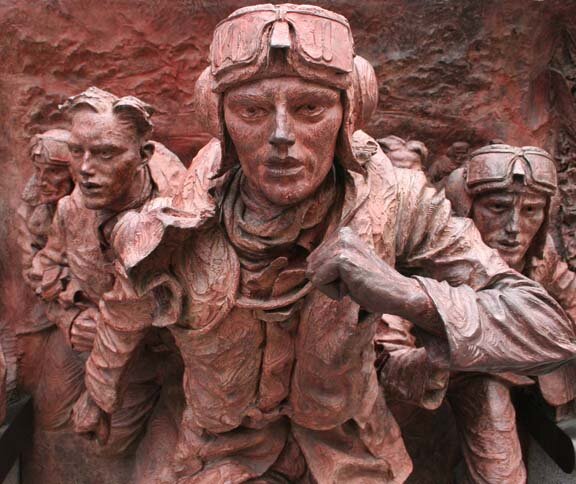



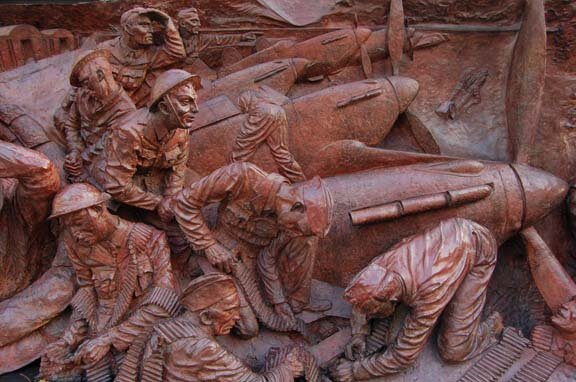

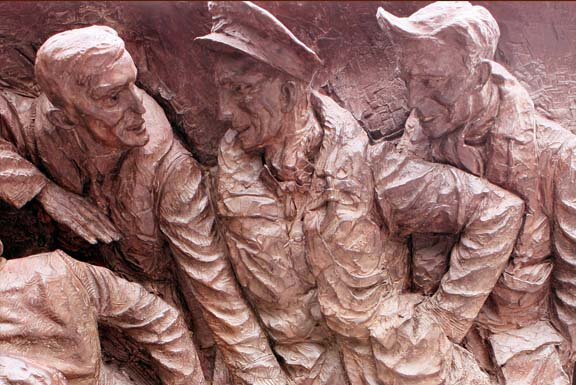
![Rest was hard to find for pilots and ground crew during the battle. "Waiting for the signal to be brought to readiness or to scramble allowed the pilots much needed time to rest. The backdrop of the Channel [and the White Cliffs of Dover] is a reminder as to where many pilots were to end up finding a place of permanent rest." writes Paul Day. Photo by Victius at flickr.com](https://images.squarespace-cdn.com/content/v1/607892d0460d6f7768d704ef/1629661655352-MLVXJ70V55JF4BMYIB2Q/9DB781B0-E7CE-4E26-ADB2-3CD1B346F2C9.jpeg)











